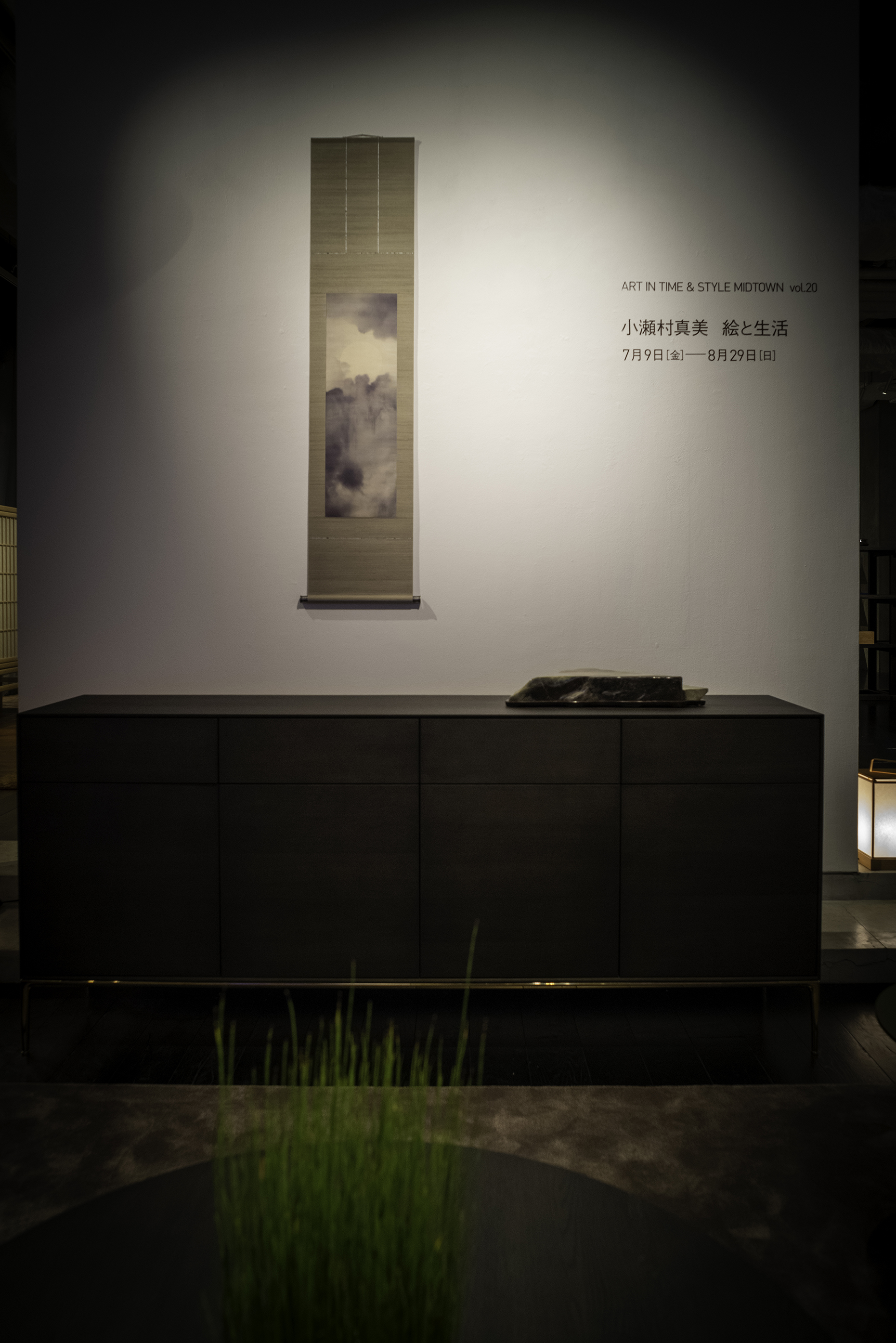月図 Moon
UV-print on silk with Japanese mounting for a hanging scroll / 80 x 25 cm *image / 2021
この軸のシリーズは日本の伝統的な絵画のあり方を再考察するシリーズの一つです。掛け軸を主とするこのような絵画の特徴は周辺の室内環境や別のものと組み合わされることを前提として主題や構成が考えられています。西洋絵画のように額内で全ての物語は完結せず、ある種部分的な表現をしているにすぎず、故に絵画の外側に可能性を多く含む表現だと言える点が非常に現代的であると言えます。
この作品は日本の掛け軸の中でも典型的な画題の一つ「月」をベースにした写真作品で、いくつかの日本的な月の描き方の特徴を参考にしています。そのひとつは主題である月自体は空白の円で描かれること、すなわち月の外側を描くことによって月の輪郭を浮かび上がらせ、月自体は下地のまま残す事で表現する事。今回は雲間の月の周辺の雲を撮影する事で、白い月を地のままに残しています。実際には雲の合間から見える昼間の白い月と日本画用の絹本の上の墨汁のシミの2つの写真を合成し、この画面は作られています。印刷は同じく絹本の上に行われ、布のシミを布に刷る、ということを行い、作品の表面の表情が本物の布によるものなのか、布の写真によるものなのかが混濁されるよう意図されています。
_
This series of scrolls is part of a rethinking of the nature of traditional Japanese painting. The characteristic of these paintings, which are mainly hanging scrolls, is that the subject matter and composition are designed to be integrated with the surrounding interior environment and other accompanying elements. In other words, in these Japanese hanging scrolls, the entire story is not completed within the frame as in Western paintings, but is only partially expressed. Therefore, it can be said that it is a very modern form of expression that includes many possibilities outside of the painting.
This work is a photographic work based on "Moon", one of the most typical subjects of Japanese hanging scrolls, referring to some characteristics of the Japanese way of depicting the moon. One of them is that the subject, the moon itself, is depicted as a blank circle. In other words, the moon itself is left as a negative space, and the existence of the moon is brought out by drawing outside the outline of the moon, not inside it. In this way, the moon becomes both the empty background and the subject of the painting. In this case, by photographing the clouds around the moon, I left the white moon as a blank background. To create this image, I combined two photographs, one of the actual white moon in the daytime seen through the clouds and the other of the ink stains on the silk for Japanese painting. The photographic printing is done on the same type of silk, and the stain on the silk is printed on the silk. The intention of the process is to muddle the surface expression of the work thus creating ambiguity between the real cloth and the photograph of the cloth.
